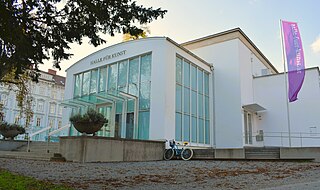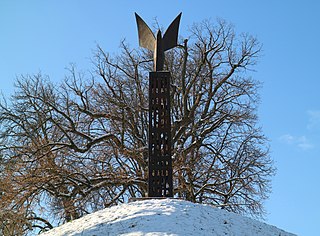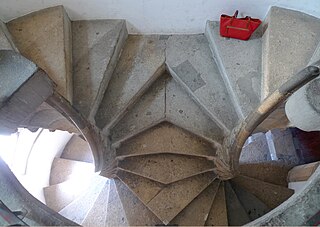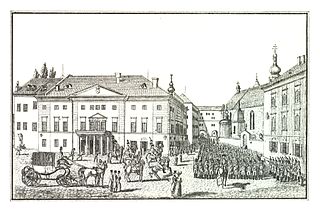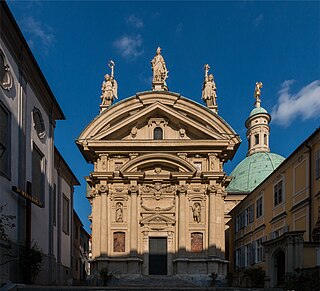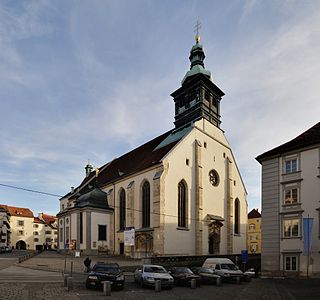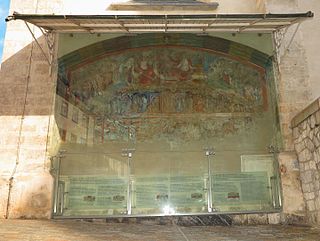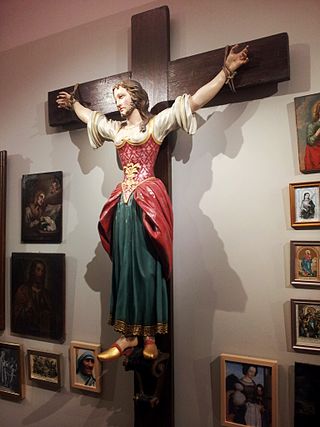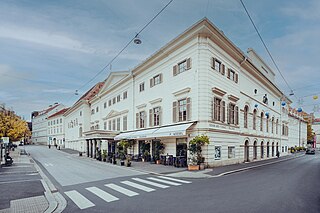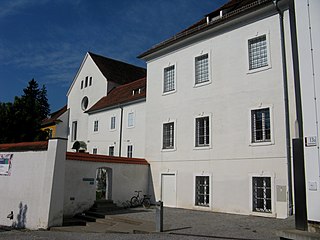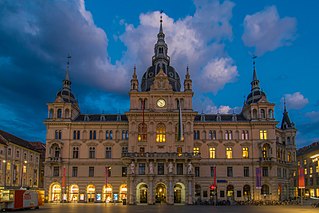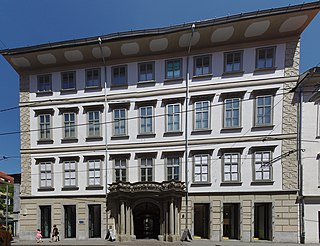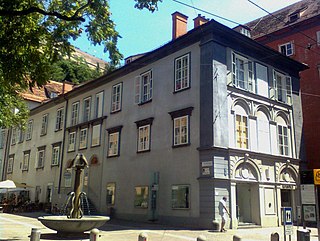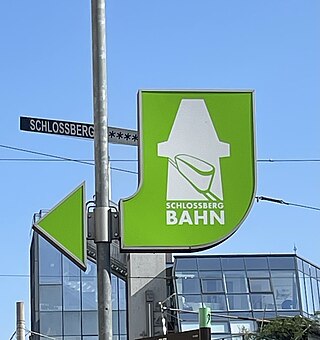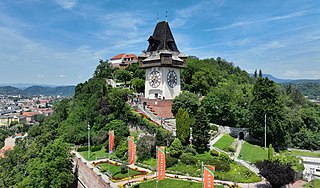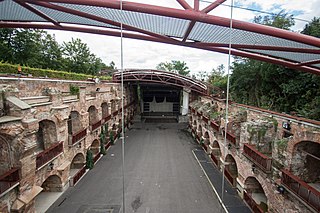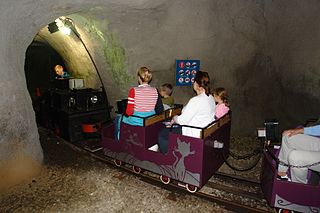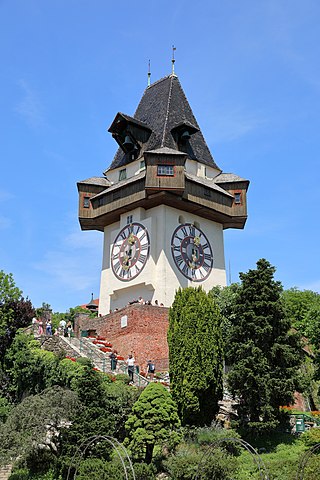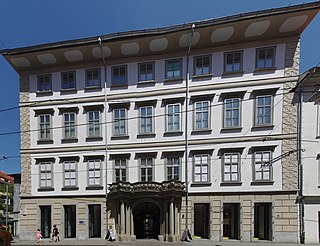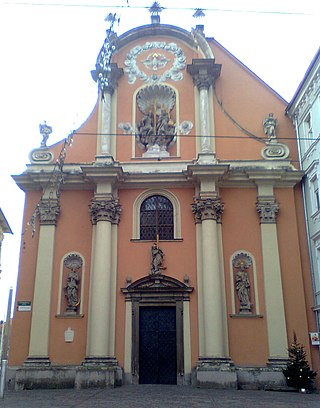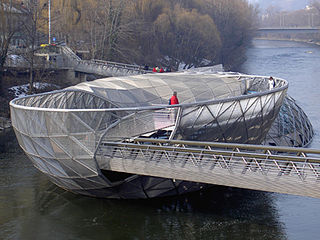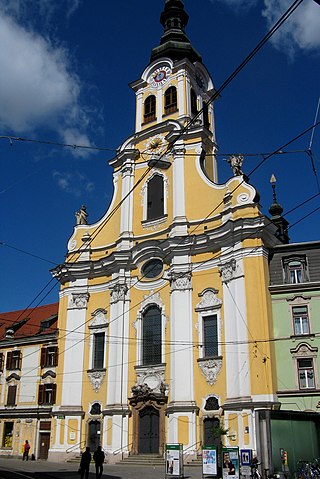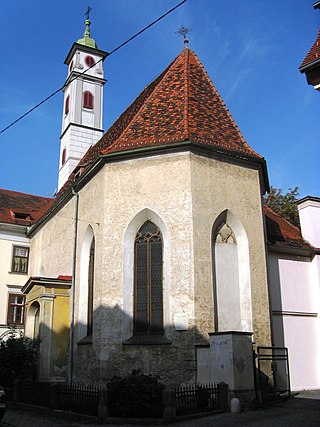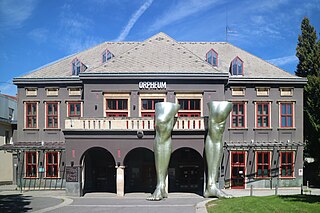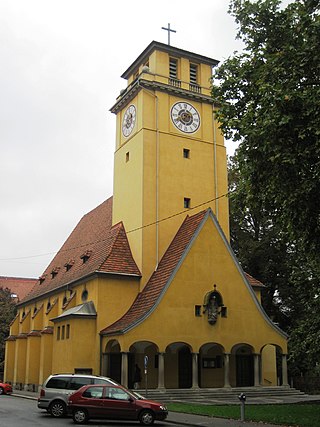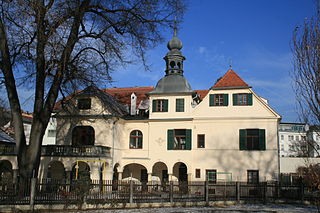Self-guided Sightseeing Tour #1 in Graz, Austria
Legend
Tour Facts
7.9 km
247 m
Experience Graz in Austria in a whole new way with our self-guided sightseeing tour. This site not only offers you practical information and insider tips, but also a rich variety of activities and sights you shouldn't miss. Whether you love art and culture, want to explore historical sites or simply want to experience the vibrant atmosphere of a lively city - you'll find everything you need for your personal adventure here.
Activities in GrazIndividual Sights in GrazSight 1: Leechkirche
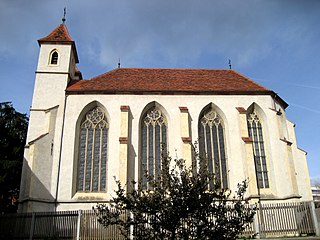
The Leechkirche, actually Maria Himmelfahrt am Leech, is the oldest Roman Catholic church in Graz. It is somewhat hidden on a hill in the Geidorf district and is accessible from both Zinzendorfgasse and Glacisstraße. It forms the curate beneficiary Graz-Leechkirche of the Graz Cathedral Parish in the Graz-Mitte deanery of the City Church of Graz.
Sight 2: Stadtpark
The Graz City Park, the largest public park in Graz, was founded in 1869 on the area of the glacis in front of the city wall under Mayor Moritz Ritter von Franck and completed in 1872.
Sight 3: Halle für Kunst Steiermark
The Halle für Kunst Steiermark is an exhibition house for contemporary visual art in Graz. Since January 2013, the Kunstverein Medienturm has been responsible for the programmatic orientation and operation of the house.
Sight 4: Freiheitsdenkmal
The (Eagle) Liberation Monument or Freedom Monument is a sculpture in the center of the Styrian capital Graz. The monument, created in 1960 by Wolfgang Skala, is dedicated to the end of the occupation in Austria and not, as previously assumed, to the liberation from National Socialism. This circumstance has recently been critically discussed.
Sight 5: Anna Plochl
Anna Maria Josephine Plochl was the morganatic wife of Archduke John of Austria. She was given the title Baroness von Brandhofen and then Countess von Meran. She and her husband were the parents of Franz, Count von Meran.
Sight 6: Doppelwendeltreppe
The Graz double spiral staircase, a twin spiral staircase, was built by stonemasons in 1499/1500 during the reign of the German King and later Emperor Maximilian I by an unknown master builder of a medieval builder's workshop in Graz Castle.
Sight 7: Burgtor
The Burgtor is located at the interface between Hofgasse and Erzherzog-Johann-Allee. It is located in the Inner City district of Graz and is part of the Graz City Crown. Apart from the outer Paulustor, the building is the only surviving Walltor in the city of Graz.
Sight 8: Katharinenkirche und Mausoleum
The mausoleum of the Holy Roman Emperor Ferdinand II (1578–1637) next to Graz Cathedral is a monumental sacred and representative building from the 17th century, which was joined together from two existing buildings. The complex, which began in 1614, was continued until 1640, interrupted several times and completed in 1714 after long interruptions in construction, consists of St. Catherine's Church and the adjoining burial chapel of Emperor Ferdinand II and his family. They form one of the most important architectural monuments in Austria from Mannerism, the transitional period from the Renaissance to the Baroque.
Sight 9: Grazer Dom
Graz Cathedral, also called St. Giles' Cathedral, is the cathedral church in the Austrian city of Graz, dedicated to Saint Giles. It is the seat of the bishop of the Steiermark diocese from 1786, called the Diocese of Graz-Seckau.
Sight 10: Landplagenbild
The landscape plague picture, also called "God Plague Picture", is located on the southern outer wall of Graz Cathedral. The fresco, created in 1485, is probably by Thomas von Villach. It is considered one of the historically and artistically most important frescoes in Styria.
Sight 11: Diözesanmuseum Graz
The Diocesan Museum Graz is the museum of the Diocese of Graz-Seckau in Graz.
Sight 12: Schauspielhaus
The Schauspielhaus Graz is an Austrian spoken theatre. It is part of the Graz city crown and is located in the first district of Innere Stadt.
Sight 13: Volkskundemuseum
The Folklore Museum in the former Capuchin monastery at St. Paul's Gate in Graz takes the present with its pressing socially relevant topics and cultural phenomena as the starting point for its exhibitions, educational programmes and events.
Sight 14: Sankt-Antonius-Kirche
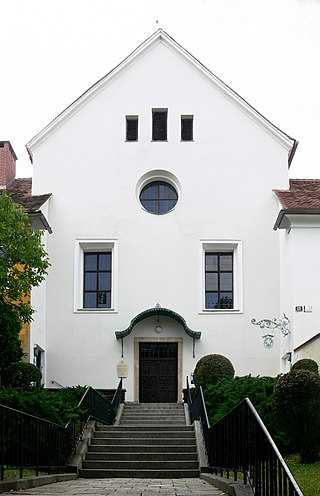
St. Anthony's Church is a Roman Catholic church in the first district of Graz, Innere Stadt. It is located on the eastern slope of the Schlossberg next to the Styrian Folklore Museum in Paulustorgasse. It is subordinate to the parish of Graz-Dom, which belongs to the deanery of Graz-Mitte of the city church of Graz.
Sight 15: Stiegenkirche
The Stiegenkirche is a Roman Catholic church in the first district of Graz, Innere Stadt. It can be entered through a characteristic staircase from Sporgasse, as it stands behind the row of houses. It forms the "Rectorate at the Staircase Church in Graz" of the Graz Cathedral Parish in the Graz-Mitte deanery of the City Church of Graz.
Sight 16: Rathaus
The Graz City Hall houses the official seat of the Graz city government, i.e. the mayor of Graz, the municipal council and parts of the city administration.
Sight 17: Franziskanerkirche
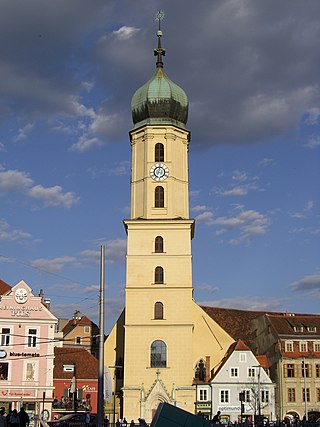
The Franciscan Church and Franciscan Monastery are a church and associated monastery in the centre of the city of Graz, Austria. The monastery was founded by the Franciscan order, who still own it, and is first mentioned in 1239.
Sight 18: GrazMuseum
Get Ticket*The Graz Museum, formerly City Museum Graz, in Sackstraße 18 is the cultural -historical museum of the Austrian city of Graz. The collections and exhibitions deal with city history and convey them. The historical collection and permanent exhibition “360Graz | A history of the city ”shows the political, economic and social history of the city of Graz. The museum is located in the baroque Palais Khuenburg, in which the Austrian heir to the throne Franz Ferdinand was born in 1863. Another location is located on the stable bastion near the summit plateau of the Graz Schloßberg.
Sight 19: Reinerhof
The Reinerhof, also known as the Reiner Hof, in the first district of the Innere Stadt, is the oldest documented building in the city of Graz. The name comes from its first owner, Rein Abbey.
Sight 20: Schloßbergbahn
The Schlossbergbahn, or Schloßbergbahn, is a funicular railway in the Austrian city of Graz. It connects the city centre with the Schloßberg, a hill and the site of a demolished fortress, with extensive views over the city.
Sight 21: Schlossberg
Get Ticket*The Schlossberg is a tree-clad hill and the site of a fortress in the centre of the city of Graz, Austria. The hill, at 473 metres (1,552 ft) above sea level, is now a public park and affords extensive views of the city. It is the site of several entertainment venues, cafés, and restaurants, and is managed by Holding Graz, the city-owned utility company.
Sight 22: Kasematten
The Schloßbergbühne Kasematten, also known as the Kasemattenbühne, is an open-air stage on the Schloßberg in Graz. Located in the Innere Stadt district of Graz, it is part of the UNESCO World Heritage Site Stadt Graz – Historisches Zentrum and Schloss Eggenberg. The name is derived from the cellar vault of the former castle captain's house of the castle on the Schloßberg in Graz, known as the casemate, which forms the structural framework.
Sight 23: Fairytale Express
The Fairytale Express Graz is a 2 km (1.2 mi) long 600 mm gauge grotto railway in the tunnel of the Schloßberg in Graz. It starts in the tunnel at the lower level of the Schloßberg lift, which is accessible from Schloßbergplatz.
Sight 24: Uhrturm
Get Ticket*The Graz Clock Tower is a 28-metre-high clock tower. It stands on the Schloßberg and is the landmark of the Styrian capital Graz with its dials over 5 metres in diameter and gilded hands.
Sight 25: Palais Khuenburg
The Palais Khuenburg is a former city palace in Graz, Germany. Today, the Graz Museum is located in the premises.
Sight 26: Holy Trinity church
The Holy Trinity Church is a Roman Catholic church in the first district of Graz, Innere Stadt. It is located between Schloßbergplatz and Murkai in Sackstraße.
Sight 27: Murinsel
Get Ticket*The Murinsel in Graz, Austria, is an artificial floating "island" in the middle of the river Mur and links the two banks on both sides. At night the blue navigation lights that surround the structure light up. This landmark of Graz was designed by New York City artist Vito Acconci on the occasion of Graz becoming the 2003 European Capital of Culture.
Sight 28: Mariahilfer Kirche
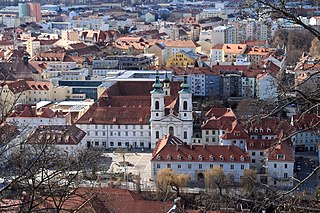
The Church of Mariahilf (Mariahilfkirche) in the Styrian capital of Graz is a pilgrimage church and since 1783 the parish church of the parish of Graz-Mariahilf in the deanery of Graz-Mitte. Attached to the church is the Minorite monastery in Graz.
Sight 29: Friendly Alien
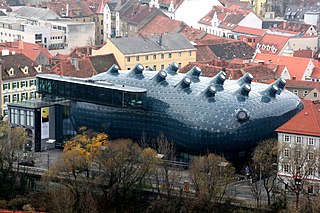
The Kunsthaus Graz, Grazer Kunsthaus, or Graz Art Museum was built as part of the European Capital of Culture celebrations in 2003 and has since become an architectural landmark in Graz, Austria. Its exhibition program specializes in contemporary art from the 1960s onwards.
Sight 30: Eisernes Haus
The Eiserne Haus is a building in the Lend district of Graz, Austria. It was built in 1848, and is unusual in having a cast iron frame. It is now part of Kunsthaus Graz, a cultural centre.
Sight 31: Barmherzigenkirche Maria Verkündigung
The Church of Mercy of the Annunciation of the Virgin Mary is a Roman Catholic church in the fourth district of Lend, Graz. The sacred building is located on Annenstraße between Südtiroler Platz and Roseggerhaus. The church is a pastoral care center of the Convent of the Brothers of Mercy, who also look after the hospital, and belongs to the parish of Graz-Mariä Mariahilf in the deanery of Graz-Mitte of the city church of Graz.
Sight 32: Bürgerspitalskirche zum Heiligen Geist
The Bürgerspitalkirche zum Heiligen Geist in Graz is a Roman Catholic church in the 5th district of Gries, Graz. Today it is the beneficiary at the Church of the Holy Spirit in the Bürgerspital, which belongs to the parish of Graz-St. Andrä, and belongs to the deanery of Graz-Mitte of the city church of Graz.
Sight 33: Orpheum
The Graz Orpheum in the Lend district is one of the oldest venues in Graz; it is housed in the building that replaced the Grazer Varieté, which existed from 1899 to 1936, in 1950 and is part of the Grazer Spielstätten GmbH, founded in 2008, along with the Schloßbergbühne Kasematten and the Dom im Berg.
Sight 34: Volksgarten
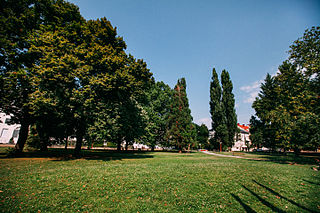
The Grazer Volksgarten is a 4.6-hectare public park in the Lend district of Graz, Germany. The park was opened in 1875 as a counterpart to the larger Graz city park on the other side of the Mur.
Sight 35: Kreuzkirche
The Kreuzkirche is a Protestant parish church in the 4th district of Lend, Graz.
Sight 36: Mühlschlössl
The Mühl-Schlössl is a small castle on the edge of the Volksgarten in Graz, in the fourth district of Lend, Graz. It is probably named after its location to the left of the Mühlgang, at most 50 m away from the Marienmühle. It was acquired as a vicarage by the Protestant community in 1908 and adapted as a vicarage in 1910. From 1912 onwards, the Protestant Kreuzkirche was built to the southwest and consecrated in 1914.
Share
Disclaimer Please be aware of your surroundings and do not enter private property. We are not liable for any damages that occur during the tours.
GPX-Download For navigation apps and GPS devices you can download the tour as a GPX file.

